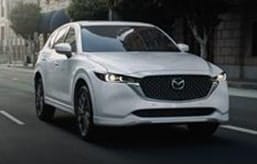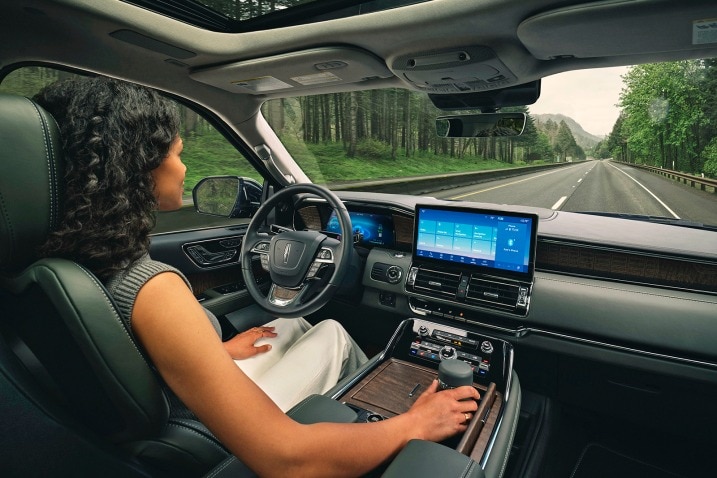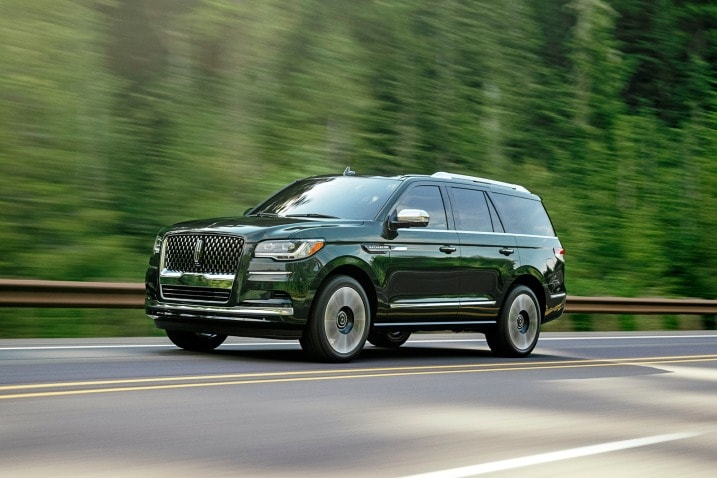- Lincoln's hands-free driving system, ActiveGlide, is ready for prime time.
- It debuts on the big, heavy, expensive 2022 Lincoln Navigator.
- Here's how to turn ActiveGlide on and what happens next.
What is Lincoln ActiveGlide and How Does It Work?
Using the hands-free feature on public roads for the first time
In the coming weeks and months, ActiveGlide, the hands-free driving system from Lincoln, will begin to hit public roads. The semi-automated technology is debuting on the refreshed 2022 Navigator three-row SUV, and Lincoln estimates that 90% of all Navigators will come equipped with the feature.
But how does it work? After all, if your brand-new, three-ton $100,000 SUV includes a feature that allows you to take your hands off the wheel, you'd better have an answer to that question. What we found, during a recent turn in the driver's seat, is that ActiveGlide unsurprisingly shares a lot in common with BlueCruise, a similar system currently working in select Ford vehicles — with some key differences. Here's what it's like on the road.
Prepping the Navigator for ActiveGlide
Step one is to turn on adaptive cruise control by pressing the cruise control button on the left side of the steering wheel. Then, press the up and down buttons to set and adjust your desired speed. At this point you've activated adaptive cruise, which Lincoln calls Intelligent Adaptive Cruise Control with Stop-and-Go. You'll know it's on when you see the animated blue Navigator icon appear in the digital driver display with — and here's the key — a blue icon showing hands placed on the steering wheel.
But the whole point of ActiveGlide is taking your hands off the wheel. Here's how that part works.
Going hands-free
If you're already driving in a designated Hands-Free Blue Zone — Lincoln says more than 130,000 miles of highway across the country are in such zones — then adaptive cruise control turns to ActiveGlide automatically. There's no additional step you need to take.
How do you know that ActiveGlide is, well, active? That blue animation in front of the driver changes. It now issues an alert that hands-free driving is enabled, and the steering wheel is shown without any hands on the wheel. (An icon also appears in the head-up display projected onto the windshield.) At this point you can remove your hands from the wheel, and ActiveGlide takes control. It keeps the vehicle straight, makes minor steering adjustments as needed, and turns around sweeping corners at highway speed. It can also continue working down to a stop and pick up again automatically when traffic starts moving.
ActiveGlide on the road
You will need to maintain attention and be prepared to resume control if needed. As with BlueCruise, the ActiveGlide system includes a driver attention monitor that reads the driver's eyes. If it deems your attention is away from the road for more than a few seconds, it will issue a warning to watch the road.
And if it needs you to take control of the steering, there's an alert for that too. This is an important point because ActiveGlide can direct you to take over the steering without giving a reason for doing so. Be prepared to react. However, another key point is that when you do take over, this does not deactivate ActiveGlide in itself. The system can reengage, sometimes only a few moments later, and you'll be back to hands-free driving.
How to get ActiveGlide
ActiveGlide comes standard on all trim levels except the most basic Navigator, which starts at $78,405 including destination. But the base model accounts for only a small fraction of Navigator sales. Look for the Reserve trim, priced from $88,740, or the Black Label from $104,675, to find ActiveGlide included.
Edmunds says
Lincoln's ActiveGlide technology is straightforward to use and understand, which may endear it to buyers who are new to semi-automated driving.





 by
by